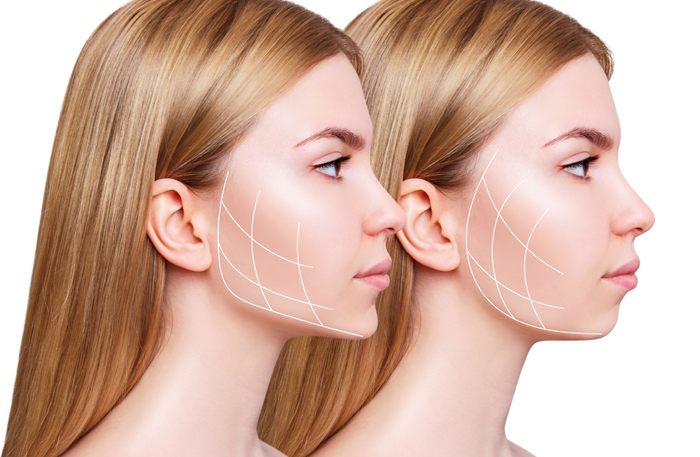Facelift Treatment & Diagnostics in Karol Bagh, Delhi
Facelift
A facelift is a corrective procedure that gives your face a more youthful appearance. The approach minimizes hanging or overlapping of skin on the cheeks and the facial structure in general. It rectifies other changes in the appearance of your face that occur with aging.
To know more, consult a plastic surgery doctor near you or visit a plastic surgery hospital near you.
What is a facelift?
During a facelift, a fold of skin on both sides of the face is pushed back, and the tissues beneath the skin are meticulously manipulated to restore the face's structure. Excess skin is removed before the fold is sewn closed.

Who qualifies for a facelift?
There is no upper age limit for obtaining a facelift. Almost anyone at any point in life might be a good candidate for this technique, as long as you are generally healthy.
If the look of drooping skin or deep lines and creases is affecting your self-esteem or if less invasive therapies are no longer working, a facelift may be the most efficient choice.
Request an appointment at Apollo Spectra Hospitals, Karol Bagh, New Delhi.
Call 1860 500 2244 to book an appointment.
Why is a facelift conducted?
- Your cheeks are saggy
- You have a lot of skin on your lower face
- Formation of a skin overlay from the side of your nose to the side of your mouth.
- Drooping skin and excess fat in the neck (if the surgery incorporates a neck lift)
What are the different types of facelifts?
- Deep Plane/SMAS Facelift
The objective of a deep plane facelift is to minimize the appearance of drooping skin at the foundation of the jawline and the neck by raising and reinforcing the weak muscles in that area of the face. - Mini Facelift
This is a delicate facelift treatment that uses small, subtle stitches beneath the hairline to allow your specialist to expertly repair and smooth out your skin while also removing excess tissue. - Mid-Facelift
The mid-facelift, as the name suggests, emphasizes the midsection of the face, mainly the cheeks. - Cheek Lift
A cheek lift, like a mid-face lift, is intended to improve the appearance of the cheekbones while also removing or decreasing the appearance of barely noticeable variations and wrinkles in the mid-face area. - Jawline Rejuvenation
Liposuction is used to remove excess fat cells from the neck area during a jawline rejuvenation. - S-Lift
Since an S-shaped incision is made on the bottom part of the face around the neck and the jawline, this technique is known as an S-Lift. - Cutaneous Lift
A cutaneous lift will also target the lower face, including the jaw and the neck. Incisions are made inconspicuously around the hairline and the ears. - Temporal or Brow Lift
A small opening along your hairline and the skin and basic muscles are pulled up to release the drooping skin on your eyes. - Fluid Facelift
A fluid facelift is known for its simplicity, efficacy and lack of invasiveness. It entails injecting an injectable serum, such as Botox, Restylane, Dysport or Juvederm, into your face to target a specific spot.
What are the benefits of a facelift?
The following are some of the advantages of a facelift:
- Reverses aging effects on the skin
- Repairs saggy, loose skin
- Enhances facial contour.
What are the risks of a facelift?
- Bleeding
- Injury (usually temporary) to the facial nerves that govern muscles
- Heaviness
- Hematoma
- Anesthesia difficulties
- Scarring
- Scar thickening or enlargement
- Hair loss in the area around the entrance point (uncommon)
- Infection
- Asymmetry between the different sides of your face
- Tissue death or putrefaction of the skin
The two most common and successful options are dependable chiropractic and exercise-based recovery sessions.
Regardless of the non-invasive treatments used, the only approach to permanently cure Spinal Stenosis is through medical surgery.
The following are the most well-known risks associated with Spinal Stenosis surgery:
- Contamination
- Blood clot
- A rip in the tissue that protects the spinal cord
Our Top Specialities
NOTICE BOARD
CONTACT US
CONTACT US
 Book Appointment
Book Appointment


.svg)
.svg)
.svg)
.svg)








